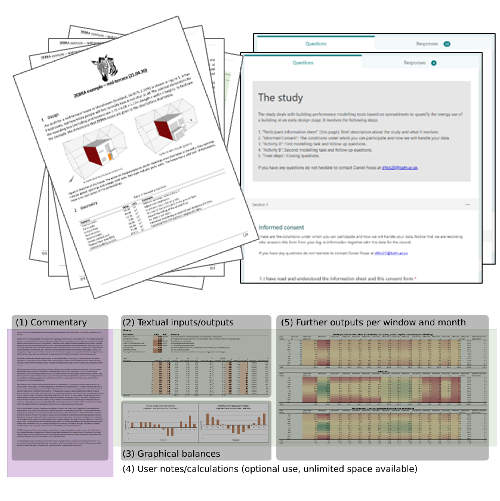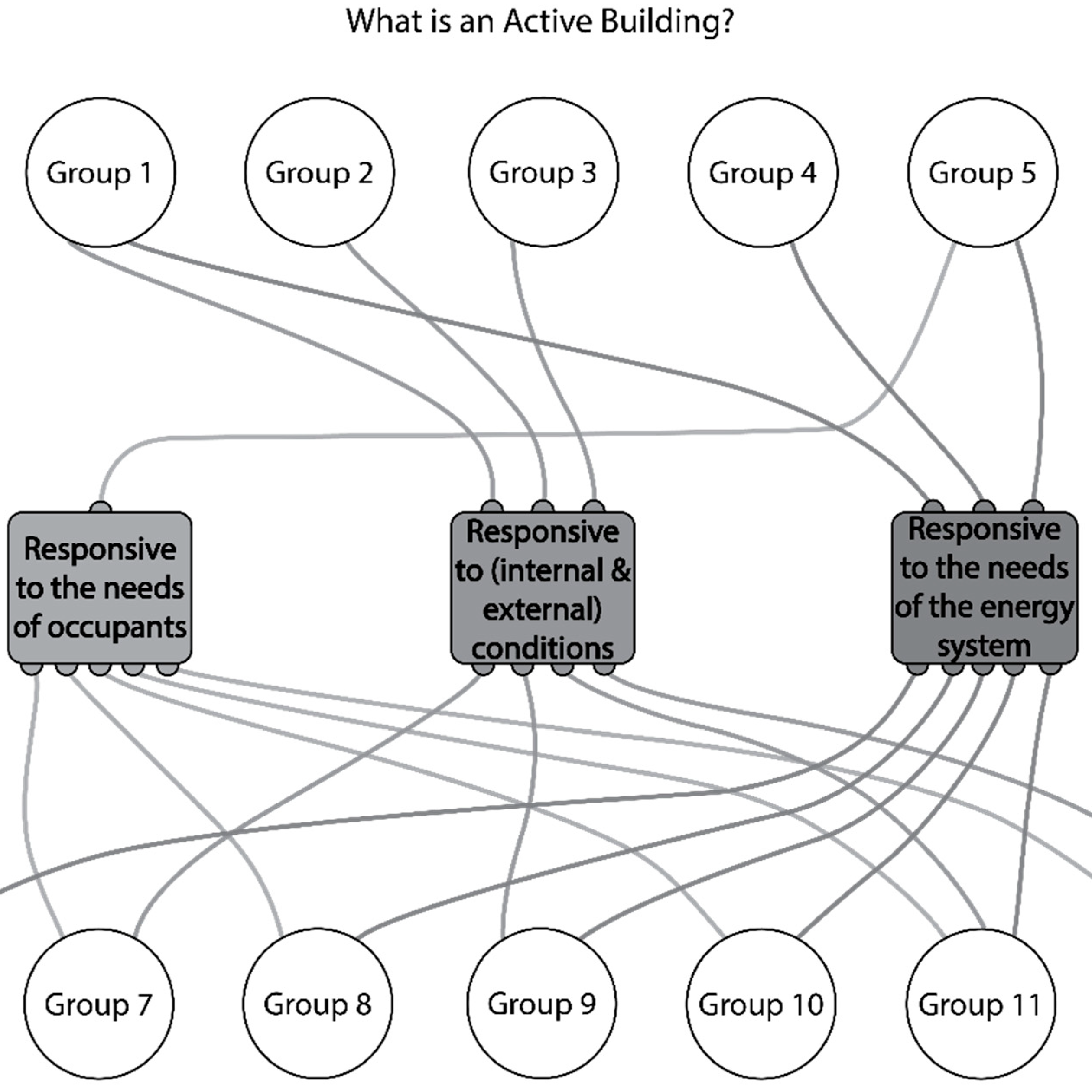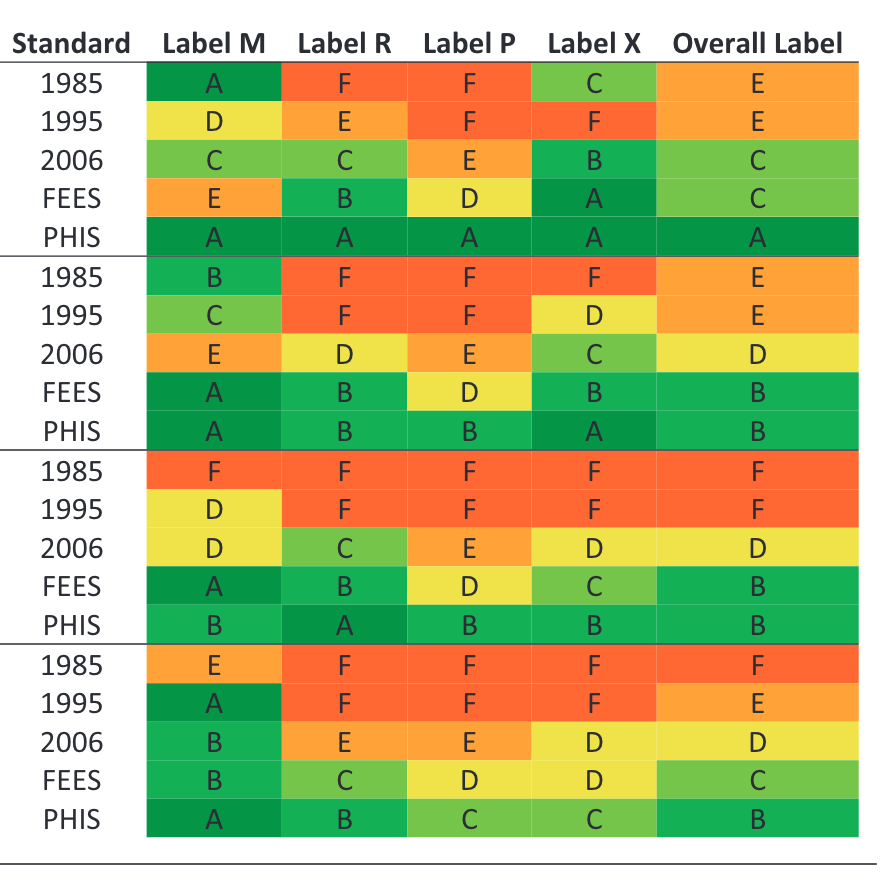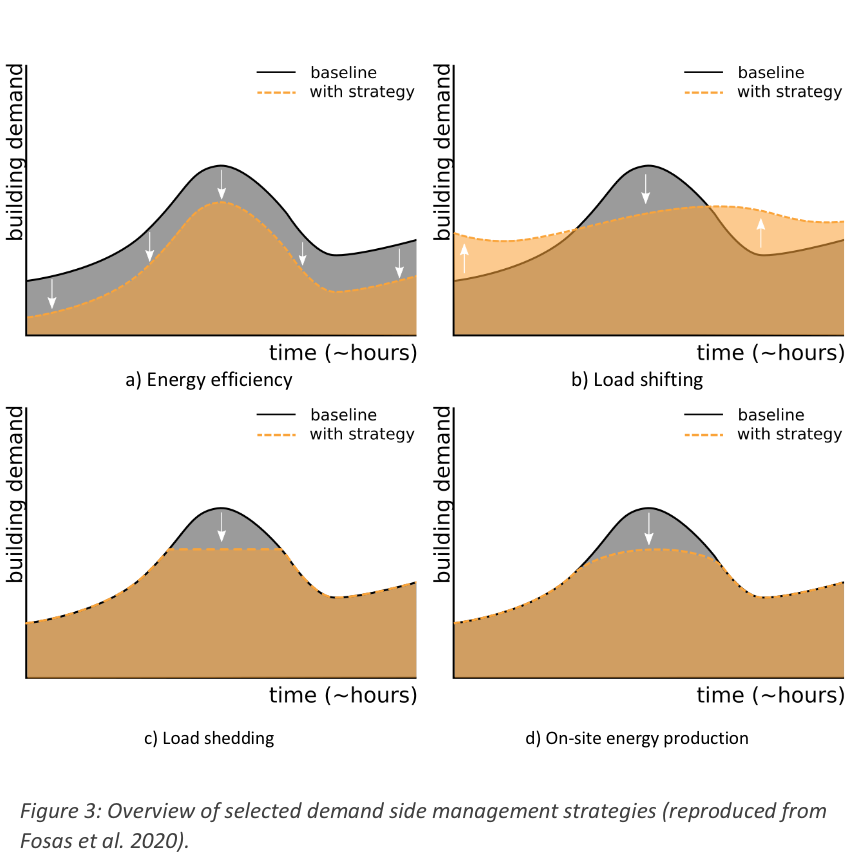ABC
The Active Building Centre
| Funder | ISCF |
| Website | Website |
| PI | Dr Ahsan Khan |
| Academic team | Team |
| Link | UKRI |
| Journal articles | (Fosas et al., 2021; Fosas et al., 2022; Nikolaidou et al., 2022) |
| Conference papers | (Nikolaidou et al., 2022) |
| Other | (Nikolaidou et al., 2020) |
References
2022
-
 Novel quick-to-use, pedagogical model for scoping low energy and low carbon buildingsDaniel Fosas, Rachel Mitchell, Elli Nikolaidou, and 4 more authorsBuilding and Environment, 2022
Novel quick-to-use, pedagogical model for scoping low energy and low carbon buildingsDaniel Fosas, Rachel Mitchell, Elli Nikolaidou, and 4 more authorsBuilding and Environment, 2022Since early-stage decisions have the largest impact on climate related emissions, if modelling is to help deliver zero carbon designs, tools are needed that can be used by those involved at this stage. By contrast, tools that require a detailed description of the building or a specialist have less usefulness at this point in the design cycle. So, just how simple can models be (mathematically and interface-wise), to give meaningful answers to decisions such as the shape of the building and the glazing ratio? The ideal tool would be pedagogical and leave the user with knowledge that they could apply even earlier to the next project. In this work we present ZEBRA, a highly simplified, quick-to-use, model for scoping zero-carbon buildings. The model only requires approximately 33 inputs, no training, considers embodied emissions and renewables and leaves the user upskilled on zero carbon design. The predictions from 5 very low energy buildings placed into 559 climates obtained by this new model are compared to the leading model for high-performing buildings. The average difference was 0.9 kWh·m⁻²·a⁻¹ (SD=0.6). The mean time taken to model a building by someone not previously exposed to ZEBRA was 35min (SD=8), and 17min (SD=3) on second use. Therefore, ZEBRA is highly accurate when compared to the best-in-class tool and can be used quickly by the uninitiated. Hence ZEBRA has the potential to be highly useful as a first-pass tool whilst simultaneously rapidly upskilling the industry.
@article{fosas2021zebra, title = {Novel quick-to-use, pedagogical model for scoping low energy and low carbon buildings}, journal = {Building and Environment}, volume = {208}, author = {Fosas, Daniel and Mitchell, Rachel and Nikolaidou, Elli and Roberts, Matthew and Allen, Stephen and Walker, Ian and Coley, David A.}, year = {2022}, } -
 Towards Active Buildings: Stakeholder Perceptions of the Next Generation of BuildingsElli Nikolaidou, Ian Walker, David Coley, and 3 more authorsEnergies, 2022
Towards Active Buildings: Stakeholder Perceptions of the Next Generation of BuildingsElli Nikolaidou, Ian Walker, David Coley, and 3 more authorsEnergies, 2022Best Paper Award on Energy at CLIMA 2022 The 14th REHVA HVAC World Congress (Rotterdam).
Several regulations and standards have been developed to reduce the carbon footprint of buildings, but these have failed to provide a clear pathway to a net zero future. Hence, we recently introduced the Active Building Code (ABCode). This provides guidance on reducing the environmental impact of the next generation of buildings, termed Active Buildings (ABs), through their synergy with the grid. This paper aims to illuminate the regulatory landscape, justify our initial proposal for the ABCode, and reveal opportunities and challenges to the popularisation of ABs. Twelve online focus group discussions were conducted, with thirty stakeholders in total, all selected on the basis of their expertise. A grounded theory approach identified five core themes in such discussions. These strongly overlap with what is incorporated in the ABCode, suggesting the code successfully captures issues important to experts. Stakeholders defined ABs as responsive buildings and proposed both energy and carbon are considered in their assessment. They hence aligned with the definition and evaluation framework proposed by the ABCode. Finally, stakeholders considered people’s tendency to prioritise capital cost as the greatest challenge to the popularisation of ABs, and the increasing demand for healthy environments as its greatest opportunity.
@article{nikolaidou2022abc_stakeholder, title = {Towards Active Buildings: Stakeholder Perceptions of the Next Generation of Buildings}, author = {Nikolaidou, Elli and Walker, Ian and Coley, David and Allen, Stephen and Fosas, Daniel and Roberts, Matthew}, year = {2022}, journal = {Energies}, volume = {15}, pages = {5706}, publisher = {Multidisciplinary Digital Publishing Institute}, issn = {1996-1073}, doi = {10.3390/en15155706}, url = {https://www.mdpi.com/1996-1073/15/15/5706}, } -
 Going Active: How Do People Envision the next Generation of Buildings?Elli Nikolaidou, Ian Walker, David Coley, and 2 more authorsIn CLIMA 2022 Conference, Rotterdam, 2022
Going Active: How Do People Envision the next Generation of Buildings?Elli Nikolaidou, Ian Walker, David Coley, and 2 more authorsIn CLIMA 2022 Conference, Rotterdam, 2022Best Paper Award - Energy Theme at CLIMA2022 (Rotterdam).
With several countries having declared a climate emergency and set decarbonisation targets, the built environment is expected to change radically. Several building standards have been developed to reduce carbon dioxide emissions from buildings, but they do not provide a clear pathway to a net zero future. The recently launched Active Building Code (ABCode) offers guidance on minimising the environmental impact of the next generation of buildings termed Active Buildings (ABs). This is achieved through their synergetic relationship with the grid. This paper presents our two-stage investigation into the stakeholder perceptions of ABs. In stage 1, we collected thoughts on the future of the built environment through a series of online focus group discussions with 30 industry experts. In stage 2, we quantified the ideas that arose from stage 1 through an online survey of 30 academics and researchers. Participants answered four questions, namely: (i) what is missing from existing regulations and standards; (ii) what is an AB; (iii) how should the performance of ABs be assessed; and (iv) what are the challenges to the popularisation of ABs. The data that was collected from the focus groups and the survey was analysed visually and statistically using logistic regression to identify the aspects stakeholders find important when envisioning the next generation of buildings. No significant differences were, in general, observed between the two groups, with industry and academia agreeing that whole-life carbon, energy demand, and energy flexibility should be used for the performance assessment of ABs – therefore aligning with the metrics suggested by the ABCode. Both groups interpreted ‘activeness’ as responsiveness, with industry experts highlighting the need to better define the relationship between buildings and the grid. They also regarded people’s mindset as the biggest challenge faced by ABs, due to the general tendency to make decisions based on capital cost. Academics and researchers also worried about the cost of technologies involved, which is however expected to drop over time. Results should be used to inform regulations and standards to make sure these are comprehended by all stakeholders and ultimately drive down carbon on all building projects.
@inproceedings{nikolaidou2022abcode, title = {Going Active: How Do People Envision the next Generation of Buildings?}, author = {Nikolaidou, Elli and Walker, Ian and Coley, David and Allen, Stephen and Fosas, Daniel}, eventtitle = {CLIMA 2022 the 14th HVAC World Congress}, booktitle = {CLIMA 2022 Conference}, location = {Rotterdam}, year = {2022}, }
2021
-
 Towards Active Buildings: rating grid-servicing buildingsDaniel Fosas, Elli Nikolaidou, Matthew Roberts, and 3 more authorsBuilding Services Engineering Research and Technology, 2021
Towards Active Buildings: rating grid-servicing buildingsDaniel Fosas, Elli Nikolaidou, Matthew Roberts, and 3 more authorsBuilding Services Engineering Research and Technology, 2021CIBSE Dufton Medal for Research in 2022.
In most industrialized countries, the buildings sector is the largest contributor to energy consumption and associated carbon emissions. These emissions can be reduced by a combination of energy efficiency and the use of building integrated renewables. Additionally, either singularly or as a group, buildings can provide energy network services by timing their use and production of energy. Such grid-aware or grid-responsive buildings have been termed Active Buildings. The recent UK Government investment of £36m in the Active Building Centre is a demonstration that such buildings are of considerable interest. One problem with the concept, however, is that there is no clear definition of Active Buildings, nor a building code to design or research against. Here we develop and test an initial novel code, called ABCode1. It is based on the need to encourage: (i) the minimisation of energy consumption; (ii) building-integrated generation; (iii) the provision of grid services; and (iv) the minimisation of embodied carbon. For grid services, we find that a lack of a precise, quantifiable measure, or definition, of such services means that for the time being, theoretical hours of autonomy of the building is the most reasonable proxy for these services within such a code.
@article{fosas2020abcsota, title = {Towards Active Buildings: rating grid-servicing buildings}, journal = {Building Services Engineering Research and Technology}, volume = {42}, pages = {129--155}, author = {Fosas, Daniel and Nikolaidou, Elli and Roberts, Matthew and Allen, Stephen and Walker, Ian and Coley, David A.}, year = {2021}, }
2020
-
 Buildings as Energy Infrastructure, not Passive ConsumersElli Nikolaidou, Daniel Fosas, Matthew Roberts, and 3 more authors2020
Buildings as Energy Infrastructure, not Passive ConsumersElli Nikolaidou, Daniel Fosas, Matthew Roberts, and 3 more authors2020It is clear that the energy infrastructure of the UK will be transformed over the next thirty years. The legal requirement to decarbonise and switch to renewables implies, with the possible exception of nuclear, an increasing move from a centralised to a decentralised energy system. In part, this is due to the fact that the energy density of renewables can be lower than that of traditional power stations, which can result in a mass adoption and hence thousands or even millions of suppliers. At the same time, moving from carbon-based fuels to a largely electrical future offers the possibility of large bi-directional flows, which in turn makes it difficult to separate users from suppliers. A simple example being an electric car, which at different times of the day might be a source of propulsion, a store for excess renewable energy or even a supplier of electricity. This new world of bi-directional flows means that the UK will have to re-write the rules on everything from tariff structures to the wiring of cities.
@report{nikolaidou2020abcsota, title = {Buildings as Energy Infrastructure, not Passive Consumers}, author = {Nikolaidou, Elli and Fosas, Daniel and Roberts, Matthew and Allen, Stephen and Walker, Ian and Coley, David A.}, institution = {Active Building Centre}, year = {2020}, }